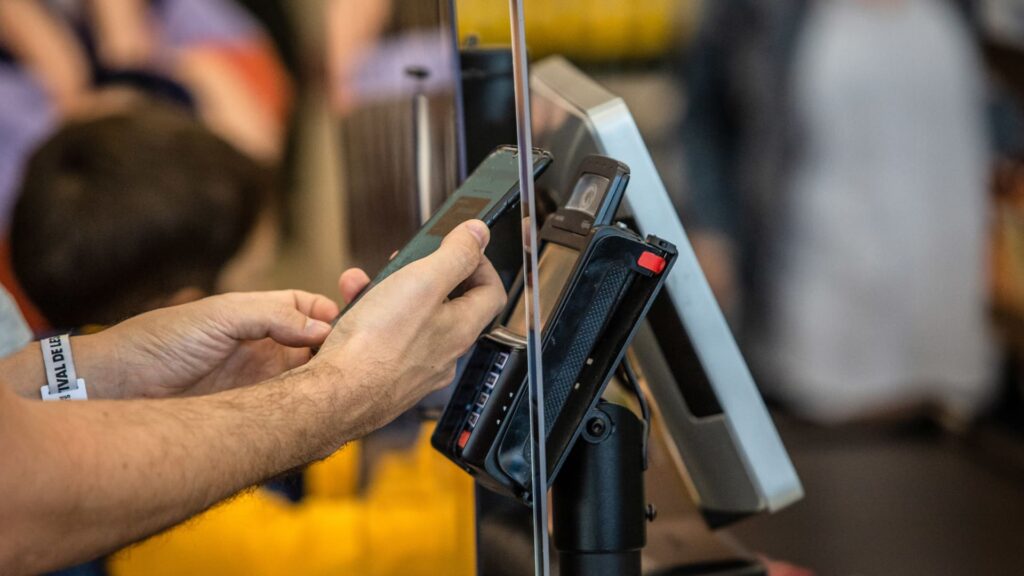History has seen a shift from abundant venture capital investments in fintech startups with ambitious visions – yet lacking tangible business metrics and fundamentals.
Bloomberg | Getty Images
With the increasing acceptance and institutionalization of cryptocurrency investments through bitcoin ETFs, Wyoming is at the forefront of advancing crypto evolution towards consumer payments.
The state is developing its own U.S. dollar-supported stablecoin, named the Wyoming stable token, set to debut in early 2025. This initiative aims to provide individuals and businesses a quicker and more cost-effective way to engage in transactions while opening up a new revenue stream for the state. The group spearheading this endeavor envisions it as a blueprint for a digital dollar on a national scale.
“The achievement would involve adopting a transparent stablecoin fully backed by our short-term Treasurys, dependent on the dollar,” revealed Wyoming Governor Mark Gordon at the Wyoming Blockchain Symposium in Jackson Hole. “A crucial aspect for me is to repatriate a significant portion of our debt by having it secured by Treasurys, which can contribute to market stabilization to an extent.”
“It’s evident to me that digital assets are poised for longevity,” remarked Gordon. “The United States must confront this matter. Washington’s approach is a bit sluggish, prompting Wyoming, known for its agility and entrepreneurial spirit, to make an impact.”
The Plan
Wyoming is presently assessing potential tech-savvy partners and vendors to assist in developing the stable token. It will necessitate exchanges and wallet providers – for example, Coinbase and Kraken offer both services – for acquiring and holding the token. The state intends to dispatch the token to an exchange for subsequent distribution to individual consumers. Ultimately, the goal is for the token to become a standard payment method for day-to-day purchases, outlined Flavia Naves, a commissioner for the Wyoming Stable Token Commission.
“Picture this: when you visit Cowboy Coffee in Jackson, Wyoming, and wish to buy a latte, their Solana wallet will be available for you to utilize the Wyoming token to purchase your coffee,” she described the stablecoin’s vision.
Additionally, there’s a philanthropic component to the initiative: the commission plans to invest the reserves backing each token in circulation in Treasurys and reverse repurchase agreements. The interest garnered from these investments will be channeled into supporting public education.
Gordon highlighted at the conference the importance of prioritizing reserve management over excessive profit-seeking for the state.
Maintaining Stability
Stablecoins are designed to retain equivalence with an underlying asset, typically the U.S. dollar, though deviations can occur due to fluctuating demand, insufficient liquidity, substandard collateralization, regulatory interventions, or network congestion.
Naves stressed the presence of a “cushion” in the reserves to mitigate potential deviations and ensure full transparency to cultivate and uphold public trust.
“Public access to audits illustrating the circulating token volume and the monetary value backing it will exist, guaranteeing a stablecoin-to-dollar ratio of 1-to-1,” she affirmed. “This token is accessible to the public, hence, akin to any public service, complete information will be available.”
The commission invites the public virtually to engage in its stable token-themed discussions and publishes meeting summaries on its website.
“This is entirely backed, and part of our endeavor is to ensure the complete collateralization of our endeavors,” Gordon added. “Further, our statutes specify that evidence of Treasury or repo acquisitions will be verifiable, promoting transparency and hopefully forestalling any disputes.”
Digitalizing Currency – and More
Naves indicated that the Wyoming stable token partly serves as a response to the Federal Reserve’s hesitance in establishing a central bank digital currency (CBDC) on a national scale. According to the Atlantic Council, over 30 nations are testing a CBDC, including the digital euro, with 19 of the G20 countries progressing in their development.
https://www.cnbc.com/2024/08/23/wyoming-is-pushing-crypto-payments-trying-to-beat-the-fed-to-a-digital-dollar.html











